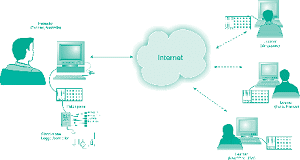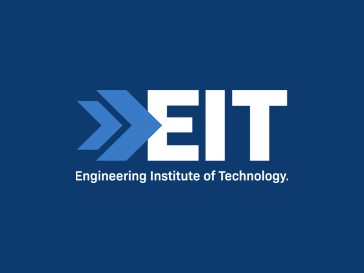The world continues to deliver education and training via age old methods, despite innovation in almost every other sector. The tide is however turning, and it is gathering speed.
Instead of being reinvented it is merely being reshaped by a number of resourceful technologies which allow education to reach a wider audience, ranging from videos through to virtual interactive exercises.
Unfortunately these new technologies are often employed to the detriment of effective learning. The thrill of large student cohorts (and their money) is more often the driver than the delivery of useful education where learning outcomes are indeed achieved.
Some would describe technology in education as revolutionary and so be it; the results of a revolution can be extraordinary, but they most often cause an upheaval, particularly in the short term.
If technology is employed in education to enhance the experience it will succeed and will no doubt contribute to learning overall. The brilliance of a great teacher, fabulous materials and opportunities for student to ‘practice’, should not, however, be underestimated.

So enters blended learning and the synchronous methods of online learning. The first refers to the process of having students in class, but also having them present on virtual platforms, where extended learning occurs. The second refers to students in a virtual classroom in real-time, on a platform which is live and interactive.
The Analytics Boom
Education becomes more personalized with a blended learning system. Not only does it benefit students to perform certain tasks on a virtual platform but it also benefits the administration of education institutions as well.
Individual students can be tracked to see where they are going astray in their courses. After that, corrective measures, informed by accurate data, can be put into place to keep students on the path to graduation. A plethora of data analytics can be generated and perused by Learning Support Officers.
The internet, and the technology that utilizes it, have profound effects on the way education gets delivered in the 21st century - it is already being observed in certain schooling systems.
The School of One in New York understands that some students prefer being led by teachers, and others prefer digital instruction. Thus, the school tries to implement student preferences into several models, to the students’ benefit:
“With School of One, teachers are equipped with real-time data on student performance and students learn only what they are ready for and do not move on to more advanced material until they have mastered particular skills. This enables each student to have an engaging, meaningful, and highly personalized learning experience.”
Education as it should be
The education sector is moving toward a system that has personalized curricula based around the preferences of an individual student. This can be achieved with online sessions/courses offered over and above the core subject matter targeting everyone.
A writer for the Inquirer, Randy David, commenting on The Free Higher Education For All Act that was passed by the American Senate, wrote:
“When people go to university to improve their job prospects rather than to get an education, the whole purpose of higher learning gets distorted. Courses that are not “marketable” lose their appeal.”
Blended learning pioneers are coming to the realization that students may want the choice to build their own curriculum and take subjects and modules that fit their own interests and requirements for a job. They also recognize that they might want to progress at their own pace. This is achievable, to a degree, with blended learning, even more so with synchronous online learning and, although difficult, very much so with asynchronous online education.
Can blended learning continue on-campus?

Blended learning’s success hinges on the fact that students are able to function within a campus-setting attended by the benefits associated with that. They are also given the ability to be trained and educated through an online platform which offers flexibility and a learning platform that suits many students raised during this digital age. Most higher education providers are experimenting with this hybrid system, where traditional face-to-face learning and digital teaching materials coexist.
Brick-and-mortar universities have had to adjust their infrastructure to facilitate the hybrid system, such as campus-wide WiFi hotspots. Some universities are feeling the strain of bandwidth costs.
Sharon Moore, chair of the Association for College and University Technology Advancement (ACUTA) says that students on campuses are increasingly demanding when it comes to bandwidth. Every student needs the internet and every student wants it to be fast, reliable and constant.
“The ‘Internet of Things’ blizzard has descended on U.S. higher-education campuses, bringing with it unprecedented network challenges as student demand for bandwidth reaches new, higher levels every school year,” Moore said.
Their report showed that devices and apps used by students on their servers have become “more bandwidth greedy than ever”. They revealed that bandwidth consumption on college campus had “nearly tripled” since 2012.
And with universities being pressured to let more students in, more bandwidth consumption will be a reality. This will put a strain on the viability of blended learning applications on campus.
Login to the campus instead
The Engineering Institute of Technology (EIT) is therefore taking blended learning even further: students can access the campus and its engineering equipment and software from anywhere in the world.

The real world can be manipulated by the virtual world with EIT’s remote labs. The college has real laboratories that can be utilized simply via a web browser. Simulation programs essential to engineering training are also installed on the computers housed in the labs.
The Deputy Dean of Engineering, Steve Steyn, at EIT explains:
“You connect to a remote desktop in Australia. You take over the desktops in Perth. You experiment with software that has been preinstalled on those desktops. You can also control real equipment inside a real lab,”
In a live demonstration, Steyn showed prospective South African students how logging into the remote desktop allowed him to move a mechanical arm from the other side of the globe. A webcam feed of the lab showed how he altered the movements of the equipment.
The college is continually working on making the bandwidth requirements on the individual, when using the remote labs and simulation software, less demanding. Despite these efforts Steyn states that, as it is, the requirements on a student’s data cap are not too data-heavy.
Works Cited
"INQUIRER.net." INQUIRER.net | Philippine News for Filipinos. Web. 24 Mar. 2017.
"Supporting Edtech Innovation with NYC Schools." IZone NYC. Web. 24 Mar. 2017.
Growing BYOD, IoT Trends Fuel Higher-Education ResNet and Bandwidth Explosion
Yahoo! News. 2017. Web 24 Mar.
